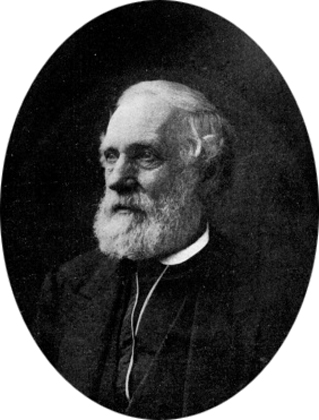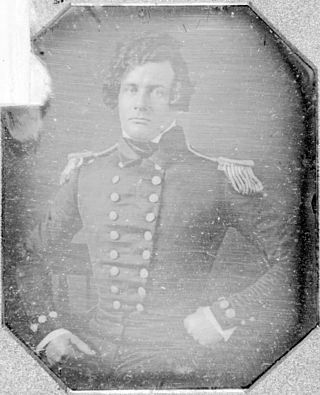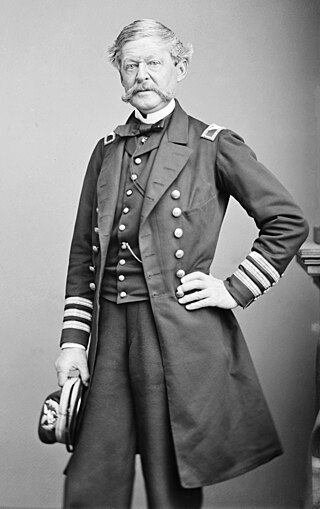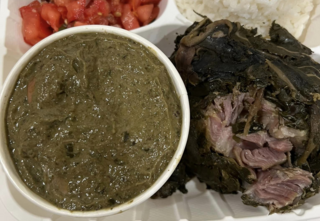
The coconut tree is a member of the palm tree family (Arecaceae) and the only living species of the genus Cocos. The term "coconut" can refer to the whole coconut palm, the seed, or the fruit, which botanically is a drupe, not a nut. They are ubiquitous in coastal tropical regions and are a cultural icon of the tropics.

Charles Wilkes was an American naval officer, ship's captain, and explorer. He led the United States Exploring Expedition (1838–1842).

Titian Ramsay Peale was an American artist, naturalist, and explorer from Philadelphia, Pennsylvania. He was a scientific illustrator whose paintings and drawings of wildlife are known for their beauty and accuracy.

The second USS Porpoise was a 224-ton Dolphin-class brigantine. Porpoise was later re-rigged as a brig. She was based on the same plans as Dolphin.

The United States Exploring Expedition of 1838–1842 was an exploring and surveying expedition of the Pacific Ocean and surrounding lands conducted by the United States. The original appointed commanding officer was Commodore Thomas ap Catesby Jones. Funding for the original expedition was requested by President John Quincy Adams in 1828; however, Congress would not implement funding until eight years later. In May 1836, the oceanic exploration voyage was finally authorized by Congress and created by President Andrew Jackson.

USS Peacock was a sloop-of-war in the United States Navy that served in the War of 1812 and later the United States Exploring Expedition. Peacock ran aground and broke apart on the Columbia Bar without loss of life in 1841.

Alfred Thomas Agate was an American painter and miniaturist.
Ono Island is a member of the Kadavu Group, an outlier to Kadavu Island, to the south of Viti Levu, one of Fiji's two main islands. It is separated from Kadavu Island by the Ono Channel. Located at 18.88° South and 178.50° East, this volcanic island is enclosed by the Great Astrolabe Reef. It covers an area of 30 square kilometers. Its maximum altitude is 354 meters. There are seven villages: Vabea (south), Waisomo (south), Narikoso (southeast), Naqara (northeast), Nabouwalu (northwest), Buliya, Dravuni.

Drua, also known as na drua, n'drua, ndrua or waqa tabu, is a double-hull sailing boat that originated in the south-western Pacific islands. Druas do not tack but rather shunt. Both ends of each hull are identical, but the hulls are of different sizes and the smaller one is always sailed to windward. The main differences, compared to proas, are that the hulls have a symmetric U-form profile, and a second hull is used instead of an outrigger. When a float (cama) is used in place of the smaller hull, the craft is called a camakau.
The Fijian double canoe was the largest and finest sea-going vessel ever designed and built by natives of Oceania before contact with Europeans.

Harstine Island is an island in Mason County, Washington, United States. The US Census recognizes it as an unincorporated community. The island is located west of Case Inlet in southern Puget Sound, 16 km (9.9 mi) north of Olympia. It has a land area of 48.305 km2 (18.651 sq mi), and had a population of 1,412 as of the 2010 census.

Astrolabe was originally a horse-transport barge converted into an exploration ship of the French Navy. Originally named Coquille, she is famous for her travels with Jules Dumont d'Urville. The name derives from an early navigational instrument, the astrolabe, a precursor to the sextant.
Malolo is a volcanic island in the Pacific Ocean, near Fiji. Malolo was used as a tribe name in Survivor: Ghost Island. Malolo Island is the largest of the Mamanuca Islands and is home to two villages.

Sina and the Eel is a myth of origins in Samoan mythology, which explains the origins of the first coconut tree.

Henry Eld was a United States Navy officer, geographer, and Antarctic explorer.

Richard Russell Waldron (1803-1846) was a purser "and special agent" in the Wilkes Expedition, together with younger brother Thomas Westbrook Waldron (consul). Several landmarks were named after him or his brother. After the expedition was completed Waldron enjoyed some popularity and influence in Washington, D.C.

Cadwalader Ringgold was an officer in the United States Navy who served in the United States Exploring Expedition, later headed an expedition to the Northwest and, after initially retiring, returned to service during the Civil War.

The Battle of Drummond's Island was a conflict between the United States Exploring Expedition and the village of Utiroa in April 1841 at Drummond's Island, Tabiteuea North, which is now part of Tabiteuea. The cause of the conflict was the disappearance of the American seaman John Anderson, who was suspected, with no evidence, to have been murdered by the village natives. In retaliation, the members of the expedition killed twelve of the natives and burned the village of Utiroa to the ground.
Namotu Island is one of the few hundreds of islands that make up the country of Fiji. It is in the southernmost part of the chain of islands called the Mamanuca Islands, which are just west of Nadi. Namotu is located just off the western coast of the main island of Fiji known as Viti Levu. Namotu Island Resort, a haven for tourists, lies about five nautical miles west of Viti Levu. It is owned by Fiji Traditional Owners; including the villages of Yako, Momi and Nabila. The resort on Namotu is a privately operated company.

Lūʻau, Luʻau, Laulau, Lū, Rourou, Rukau, Fāfā, Hāhā, and Palusami are all related dishes found throughout Polynesia based on the use of taro leaves as a primary ingredient. While taro generally is known as a root vegetable for its starchy corms, the leaves are consumed as well. The base recipe is vegetarian. Most often, coconut milk was added, and later meat or seafood. The texture of the dish range from a thick soup to a dense cake.

Taioro is a condiment made from the grated flesh of the coconut and allowed to ferment. It is traditional food found throughout the islands of Oceania and is often eaten as an accompaniment to meals.























